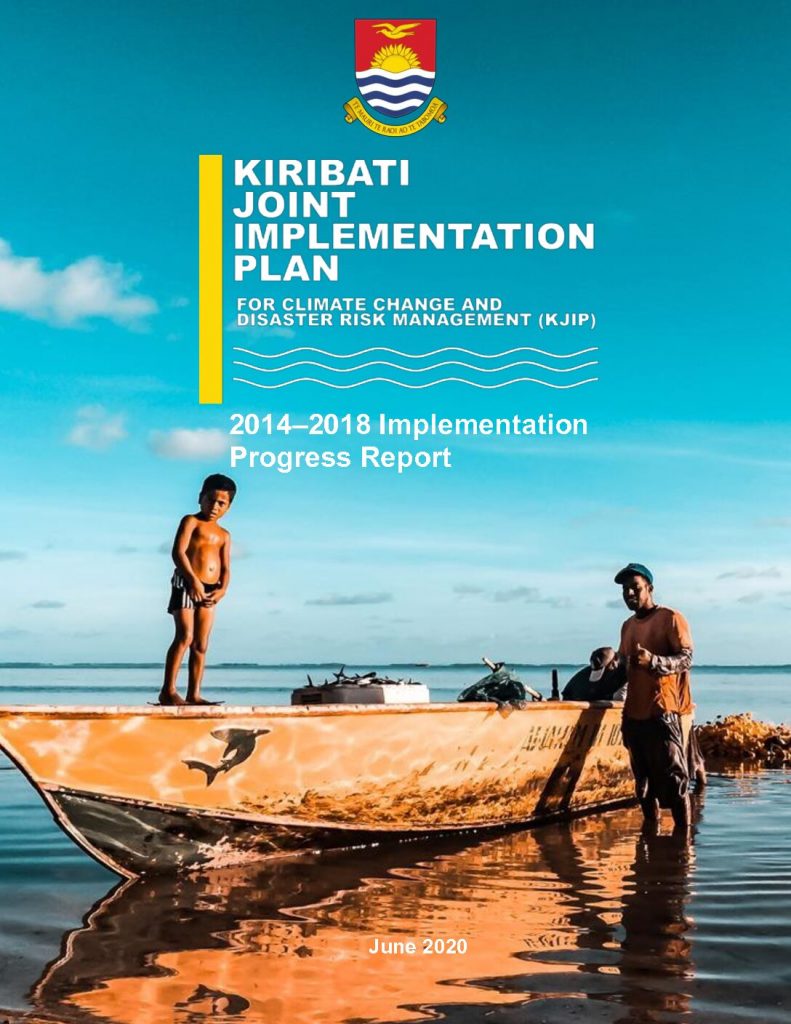
Kiribati Joint Implementation Plan for Climate Change and Disaster Risk Management (KJIP)
2014–2018 Implementation Progress Report
The Republic of Kiribati, located in the middle of the Pacific Ocean, is a low-lying, developing island nation. Because of this, the country is extremely vulnerable to the impacts of climate change.
In 2011, the Government of Kiribati initiated the process of developing the KJIP, which serves as the country’s National Adaptation Plan (NAP) document. The goal of the KJIP is to increase resilience to the effects of climate change and disaster risks by focusing on mainstreaming and coordination across sectors and scales of governance.
This report presents the outcomes as of November 2019 of the first full stocktake of progress in implementing the 12 strategies of the KJIP across Kiribati’s government agencies. As the KJIP is a 10-year plan, at the time of writing this report, many of the actions are still at the early stages of planning or design for implementation in future years. Preparation of this report has been undertaken by the Kiribati Office of the Beretitenti’s (President’s) Climate Change Unit, in collaboration with technical assistance provided by the NAP Global Network.
This report is part of the emerging KJIP Monitoring and Evaluation system and is intended to be used in the evaluation of Kiribati’s adaptation progress.
Related Resources:
- Report | Joint Implementation Plan for Climate Change and Disaster Risk Management (KJIP) 2019-2028
- Blog post | Five New Tools for Coordinating Climate Change Adaptation in Kiribati
- Infographic | Kiribati: Adaptation to Climate Change for All
- Study | Strengthening Gender Considerations in Kiribati’s National Adaptation Plan (NAP) Process
- Video | The Framing of Gender Issues Matters: Kiribati’s experience
- Kiribati In-Country Support Program
Publisher: Government of Kiribati